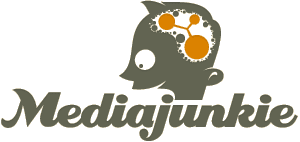Doc Searls of Cluetrain (and Linux Journal) fame, reports on the growth in importance of the living part of the web:
Publishing 2.0
Chad Dickerson at Infoworld says
Over the past several weeks, requests for InfoWorld’s Top News RSS feed have regularly exceeded the requests for our home page. This has been going on long enough now that we’re certain that it’s permanent. I think it’s a big deal.
During the business day, we track hour-to-hour performance (using a combination of shell scripts and Analog) and in any given hour, about 8 of our top 10 most requested files are RSS files. The actual numbers are proprietary, of course, but I can say that we have seen significant growth in overall RSS requests just in the past several weeks.
Feels like a tipping point to me.
Me too. It isn’t just RSS that’s getting huge. It’s that more people are getting their Web services without the complicating container we call a browser. What we’re stating to see is another Web, alongside the static one we browse like the aisles in a store, or the stacks in a library, looking for finished goods to read or buy. This other Web isn’t served up the same way as the one we’ve been browsing for the last eight years. We see it in a news aggregator, or a blog, or a message on a phone, or a search through an engine that only looks for fresh goods. Yes, you can see it in a browser too, but it’s different in kind from the static stuff. Most importantly, it’s live.
(Emphasis added.)
Doc likes the Technorati name for this phenomenon (“the world live web” and credits hearing it from the first time from his son):
I first heard the best name for this other Web a year ago, from my son Allen, who called it the World Live Web. I was talking to Phil Windley about it yesterday. Here’s what Phil wrote:
Why is RSS important? Because it says “here’s what’s changed on the Web.” When I started building Web sites in 1993, it was very clear then that people visit sites that get updated frequently. That’s still true. Now, however, we have a new tool, RSS, that tells us what’s changed. I no longer have to limit my reading to sites I know get updated frequently. Instead, I get pinged whenever sites I’m interested in change. That’s a fundamental shift in what the Web is. In fact, its something brand new.
It’s still framed in publishing terms. We still “author,” “write” and “post” things called “journals” and “pages.” But there’s a big difference, and that’s currency. The Wide Web is archival. the Live Web is current. That the Live Web also archival doesn’t make it any less current, either.
(He then goes on to say that he thinks the RSS brand has meaning at that the Atom one doesn’t really suggest anything and that Dave Winer’s proposal to merge them is magnanimous, given that RSS has reached this tipping point. I tend to agree with those who consider the concepts already merged. People will think of Atom as a type of RSS, or just lump the ideas together because they are so similar, although Atom also incorporates an API analogous to the Metaweblog API also pioneered by UserLand.)

Comments
One response to “The RSS tipping point”
the RSS tipping point
I won’t add to the recursion, but I’ll chime in with everybody quoted in this post to the Power of Many and say I think this is an important development. I’ve been reading Steven Strogatz’s excellent book Sync: the Emerging…